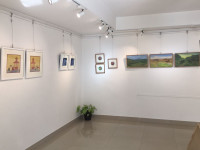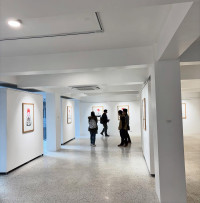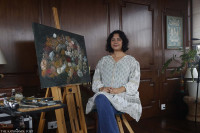Arts
Celebrating the art in nudity
Curated by Roshan Mishra and Kapil Mani Dixit, ‘The Virtually Nude Show’ is a thoughtful virtual exhibition that tries to break away from the conventional connotations attached to nudity in art.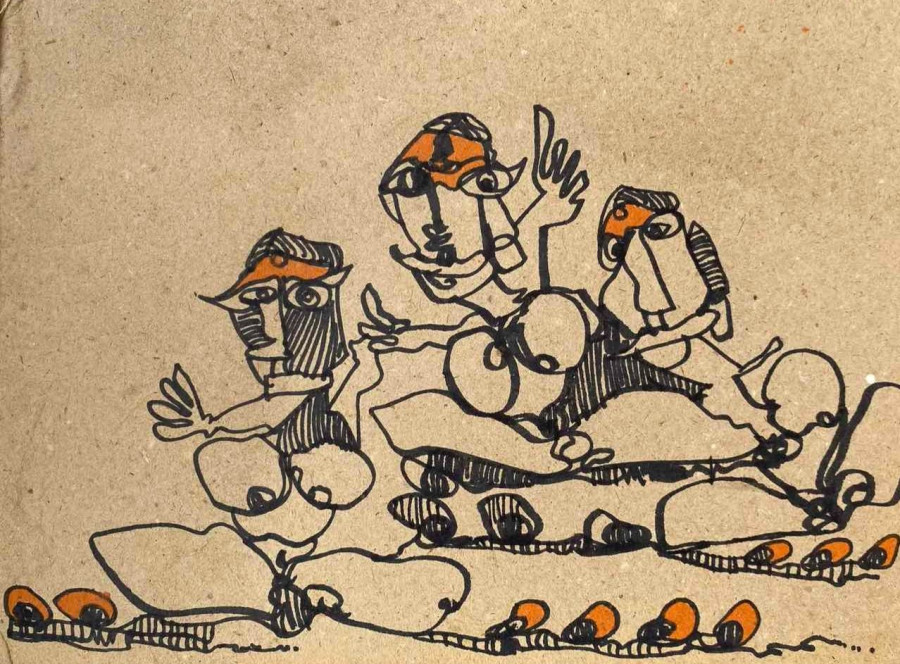
Ankit Khadgi
Torsos, thighs, breasts, vaginas, and phalluses. Slim, hairy, chubby, and smooth bodies. Who would have thought that the most intimate parts of our bodies, which we hide under our clothes, can be not only the subject and medium of art but art itself?
When one visits the website of Nepalian Art, they are greeted with such pieces of art, which are made with compassion, love, anger, frustration—highlighting how our bare bodies can be forms of artistic expression.
Curated by Roshan Mishra and Kapil Mani Dixit, ‘The Virtually Nude Show’ is a carefully chosen and thoughtfully organised virtual exhibition that not only tries to break away from the stereotypes that are usually associated with nude artforms but also celebrates bodies of all kinds.
One of the first artworks that meet the eyes of the visitors is a piece by Roshan Pradhan. Titled as ‘A New World’, through the artwork, Pradhan depicts a future, an apocalyptic world, where robots rule the world.
In the painting, we see a woman indulging in sexual intercourse with a robot. The woman is so lost seeking pleasure that she has closed her eyes and has submitted her body to the robot. Meanwhile, at the bottom of the painting, we see two small kids. In between, them is a tiny robot.
Through these motifs, Pradhan depicts what the future could have in store for us. The woman represents the whole of humankind, and Pradhan, through the woman seeking pleasure from a robot shows how we are submitting our soul and body to robots for the sake of pleasure and excitement that isn’t going to last forever.
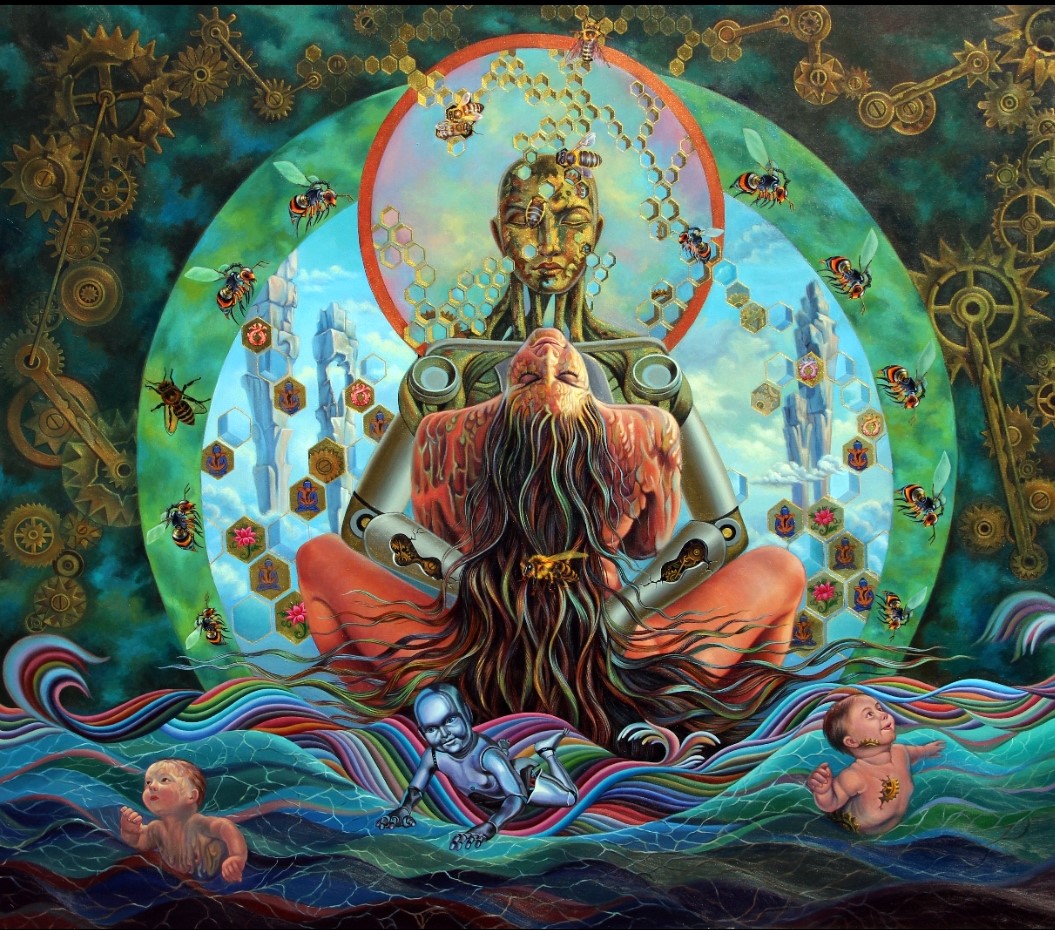
Meanwhile, the small tiny robot symbolises the future possibilities of the union between human beings and robots. There are other equally captivating motifs and use of colours in his artwork that succeeds in what he aspires to do—warn the people about the doomed reality of the future.
Another equally poignant work is ‘Asylum Project’, a photograph layered with a digital painting of George Strifatris, a Greek artist, which incites emotions of empathy and melancholy.
In the photograph, we see the behinds of two naked men who are walking on a stairway. One man is putting his arms around the other, who is holding a thin fabric in his right hand. The work talks about how human beings are migrants in their own land, and the world isn’t as one supposed it will be. And to overcome the nothingness, the artist believes one needs to be brave and naked and find their own refuge.
Hence the subjects of two bare naked men in the photograph successfully convey his message: that if one needs to reach the state of nakedness, the shredding of the inhibitions of the soul is necessary to find one’s sanctuary.
But not all artworks depict naked human beings. Breaking away from the idea that nude art is equal to drawings, paintings, and photos of bare-chested human beings who flaunt their body parts and embrace their sexuality, there are many artworks that embody the essence of nakedness without any skin show.
And among such artworks, Mukti Thapa’s artwork ‘Sangam’ (Confluence) stands out, both because of its simplicity and intricacy. In the artwork, Thapa depicts male and female genitals, which are surrounded by various motifs, rich in intricate detailing.

The male and female genitals are infused together in the artwork, hence the title Sangam (Confluence), signifying the coming together of the two body parts who now have become one.
Sara Koinch’s ‘Lockdown’ is another equally evocative personal artwork who through her painting of a naked woman not only depicts her sentiments but also reflects the feelings and the roller coaster of emotions, which most people went through this year.
In the painting, we see a naked figure of a woman who’s all blue, juxtaposed along a maze-like structure. The woman has her eyes closed, and in her right hand, she is carrying a hammer. Meanwhile, the facial structure is painted in such a way that it resembles a door lock.
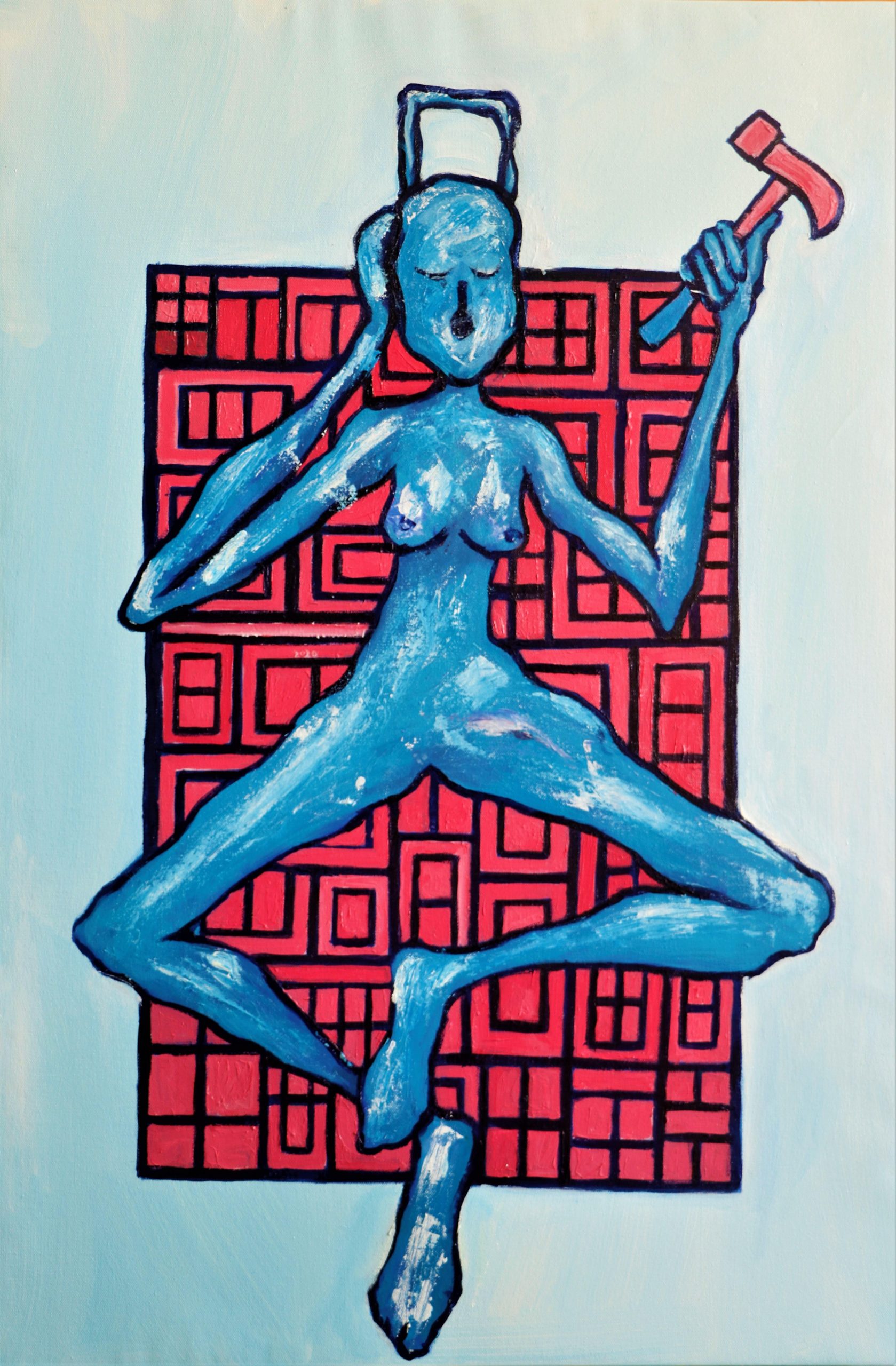
With the help of the information provided to the viewers, we get to know that Koinch is trying to depict the frustrations she went through during the lockdown and she succeeds in doing so with the help of motifs in the painting. The blue colour used in the woman symbolises her mental state. Likewise, the maze, which is in the background, also symbolises the confused mental state of her mind. She says during the lockdown, she felt that her brain was like a door lock, meaning her brain was stuck and fixed, as she couldn’t use her mind in doing things she used to do freely.
One thing that also should be appreciated about the exhibition is the space it gives the artworks that depict the bodies of men delicately. Rarely do we get to see bare-chested chubby, thin, old and young men, embracing nudity in forms of art, as female nudity is mostly given more focus in the artforms, which too is filled with the male gaze.
However, in the exhibition, there are plenty of bare and naked men, who are embracing their sexuality, accepting their vulnerable, delicate side, and this is refreshing to see—a good break from all the macho, virile men that we have been seeing from ages in various artforms when it comes to showing the bare and nude.
One such artwork that not only draws the eyes of the visitors but will also make people retrospect about their surroundings is by Roshan Mishra, the curator of the exhibition. Titled as ‘The Scream’, the mix media artwork is a self-portrait of Mishra, where we see him screaming. While we use our eyes to watch and observe Mishra’s artwork, one’s hearing sense will equally be equally active, as it feels that he is actually screaming aloud, even when we don’t hear any noise.

In the artwork, which is a photograph printed in a negative format, he has also used acrylic colours as we see hues of reddish colour spreading around the photograph.
His artwork is simple, but it leaves an everlasting impact—a thoughtful commentary on the society and the gender norms that suffocate men, forcing them to follow a certain behaviour and carry out roles, even when they don’t want to.
The scream here both is an outcry, a release of anger and frustration towards society, and a call out to other men, who are equally disturbed by the timeworn gender roles and norms.
But there are few artworks that are either very plain or require a lot of effort to understand. For instance, ‘My Body My Home’ by Ricardo Coelho is bound to test the patience of viewers. In an eight-minute-long video, we see a group of naked men and women entering and coming out of a cage. Likewise, they also utter some words, which are difficult to understand, as it is in a different language, due to which the viewers may not understand what the artist is trying to say through the video.
Sadaf Faiz’s ‘Poor Substitute of a George Keyt Woman’ in comparison to other artworks is too plain, as her work features only the figure of a half-naked woman, making her artwork forgettable.
The curators should also have taken heed in making the exhibition more engaging, with adding features like music in the background or made it more appealing since it exhibits 57 artworks, which can be a lot for the audience, in regards to investing their full time and watching the exhibition thoroughly.
But their efforts in trying to change the orthodox concept attached with nude artworks and to provide a platform for inspiring artists who use nudity as a form of artistic expression in an unprogressive society is exemplary, opening possibilities to celebrate art in nudity in the future.
The exhibition will be held until 31st January 2021, virtually.
Here's the link to the exhibition: https://nepalianart.com/vns-artworks/




 7.12°C Kathmandu
7.12°C Kathmandu
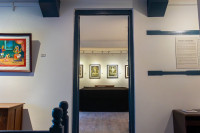
%20(1).jpg&w=200&height=120)
